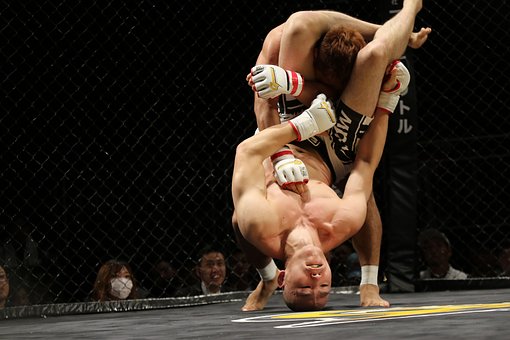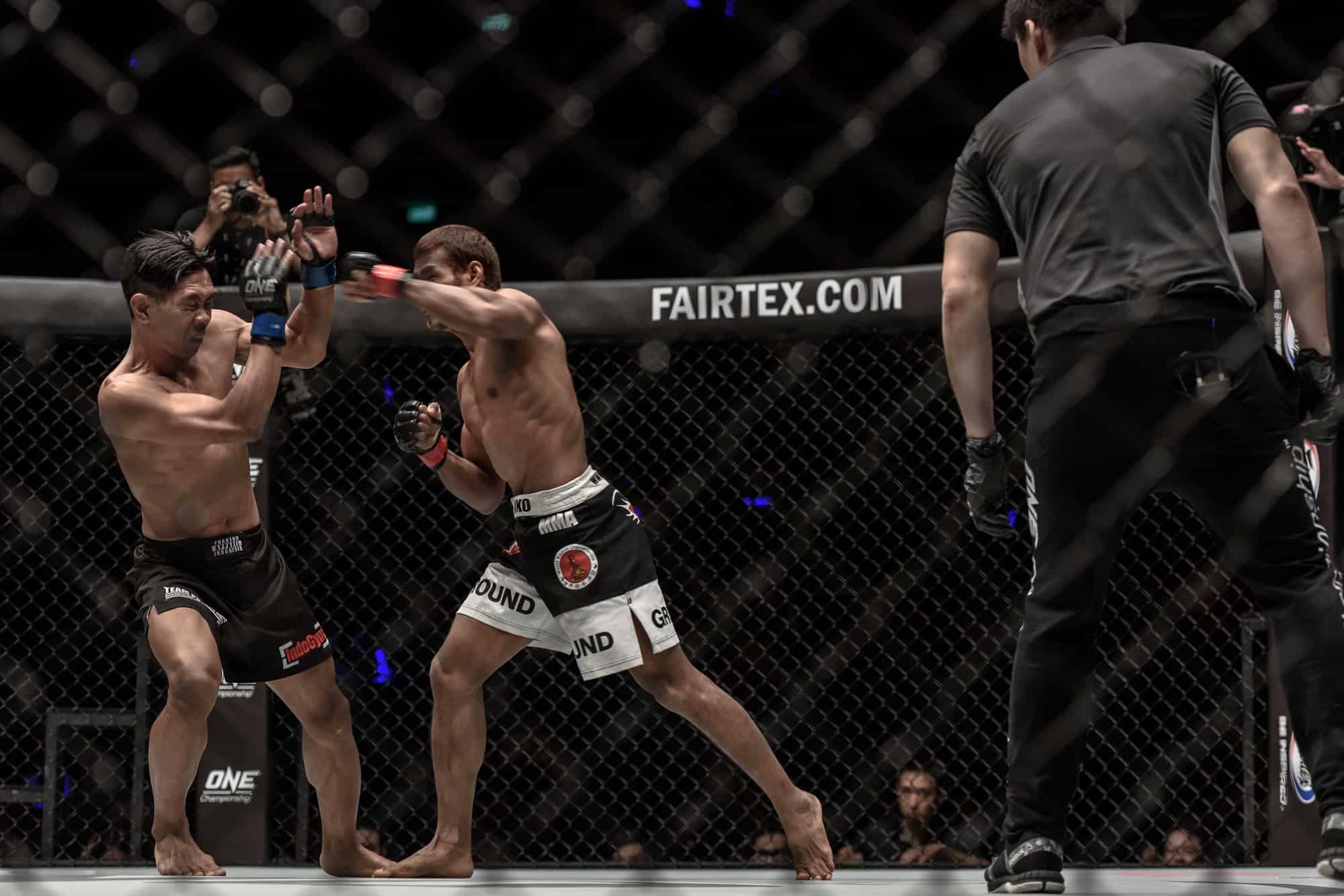Lethwei vs MMA; which style is superior?
Which martial art is better when it comes to real life self defense and real world combat?
Who would win (hypothetically speaking of course) in a fight between a Lethwei fighter and an MMA fighter?
In this article, we take an in-depth look at :
- origins and historical significance
- the strengths and weaknesses of Lethwei and MMA
- Which is better for self defense and street fighting?
While we will not look too much into Lethwei vs MMA in a real fight situation, assumptions and can be made and probable conclusions can be drawn based on these styles techniques, strengths and weaknesses as well as their application to self defense which are all discussed below.
Lethwei: A Brief History
Lethwei a.k.a Burmese Bareknuckle Boxing or Myanmar Traditional Kickboxing is the ancient boxing style that originated in Burmese martial arts and similar to Muay Boran from Thailand and Khun Khmer from Cambodia, it has become a popular national combat sport.
It is known as the ‘Art of 9 Limbs’ due to the use of the eight limbs (Legs, Hands, Knees, elbows) and headbutts.
The first known records of competitive Lethwei matches come from the ancient Pyu Empire which existed 2nd-century BCE to mid-11th century.
It was during this time that Lethwei is thought to have originated and used along with weapons based martial arts by the Myanmar armies in ancient battles with neighbouring Kingdoms.
In history, Lethwei matches were held during special holidays and festivals and even at funerals. Entertainment and celebrating the Burmese culture and history were the original aims of these matches.
Lethwei was also practiced by warriors for the battlefield and by everyday people as self defense against neighboring Kingdoms who might attack.
MMA: History in Brief
MMA or Mixed Martial Arts in reality is as old as the human history of fighting.
In Ancient times mixed or hybrid styles of fighting combining striking, grappling, submissions and other techniques were used as a means of training for actual warfare as well as for entertainment purposes as spectator sports.
Really this is not too much different from today where modern day soldiers still train in combat arts outside of battle and promotions such as UFC and ONE Fighting Championship exist as spectator combat sports.
But modern day MMA can be traced back to the birth of UFC in the early 1990’s that were organized to promote and showcase the effectiveness of Gracie Ji Jitsu against other styles of fighting.

With the evolution of rules such as weight classes, timed rounds and protective gear such as gloves and groin guards the sport become more professional and grew immensely in popularity.
MMA’s increasing popularity led to its integration into popular culture, with movies, TV shows, and video games featuring the sport, further solidifying its position in the mainstream.
Lethwei vs MMA: Strengths & Weaknesses
While MMA is more established and known around the world today, LEthwei has gained more and more recognistion globally (but still not as much as its ‘cousin art’ muay thai).
But, both styles are recognised as powerhouses in the combat sports and martial arts world.
Below we look at the main strengths and weaknesses when it comes to Lethwei vs MMA.
9 Limbs vs 8
A major difference between Lethwei and MMA lies in the use of the headbutt technique.
The headbutt technique is part of the LEthwei system and is used to great effect by LEthwei fighters in compeition.
This can be considered one strength of Lethwei and a potential weakness of MMA should these styles match up in an actual ‘no rules’ fight.
As having the use of an extra Limb and powerful technique like the headbutt is a strength that Lethwei can claim to have over MMA.
Ground vs Stand Up
Having the ability to fight on the ground is a major advantage that MMA has over Lethwei.
A high level grappler can take advantage of the ground to control and submit an opponent or in a real fight break a limb or put an opponent to sleep with a choke or strangle.
A Lethwei fighter has virtually no experience with ground fighting, escaping pins or submissions or even scrambling on the ground to get back on the feet, and would probably be helpless against even a mediocre grappler with a few years knowledge in ground fighting.
Having virtually zero ground game can be considered a major weakness or Lethwei.
And training and learning takedowns and submissions and ground fighting is definitely a major strength of MMA.
Self Defense Weaknesses
When it comes to self defense and street fighting, both Lethwei and MMA are lacking in some areas.
And the main two areas where. both Lethwei and MMA can be considered lacking when it comes to self defense are:
- weapons defense
- multiple attackers
As combat sports that operate under rules and regulations, both Lethwei and MMA do not even consider defending against or attacking with weapons (outside of their own Limbs).
This can be a major weakness for both martial when considering self defense situations.
When it comes to weapons defense then martial arts such as Gracie Jiu Jitsu or even Krav Maga can be more suited for someone to learn and train for the main reason of weapons self defense.
When it comes to facing multiple attackers, both Lethwei and MMA also fall short in their training as they do not consider multiple attackers as they are primarily combat sports first and foremost.
So Which Would Better for Self Defense?
This is a tough question to answer conclusively and it really depends on the individual in a lot of cases. What their individual preferences are, their training experience, their geographic location and other factors as well.
But we will look at the question of Lethwei vs MMA for self defense based on the following points below.
MMA is more accessible to learn and train
MMA right now is much more accessible than Lethwei for much of the world’s population.
In fact Lethwei really only is accessible for training and learning in very few places outside of Myanmar/Burma.
So for the vast majority of the population choosing a style to learn and train for self defense; Mixed Mertial Arts is most likely the better option just because MMA gyms and academy’s are far more accessible than Lethwei gyms right now.
MMA includes ground work and submissions/grappling
One important aspect of MMA is the grappling and submissions which can be very useful in self defense situations especially with legal implications of knocking a person out cold (even in self defense).
Whereas with grappling, controls and pins as well as submissions that MMA train, a person can control an attacker without having to resort to knock them out.
But in some cases there really is no choice.
However whenever there is a choice and option then grappling and pins/controls and submissions to gain compliance would be preferable over knocking someone out.
But in the case where striking and knocking someone out is the best option then Lethwei has one advantage for self defense and real life combat.
Headbutts are Legit Self Defense Techniques
The use of the headbutt in self defense and combat is probably as old as fighting in human history.
Headbutts were included in fighting systems of Muay Boran (Ancient boxing and the precursor to modern day Muay Thai) and are used and trained in Lethwei matches and competition today.
Headbutts are very useful techniques that can be unexpected but effective in ending a fight quickly.
As Lethwei trains and uses headbutts and MMA does not, this is a useful area of self defense that Lethwei has an advantage of MMA in.



